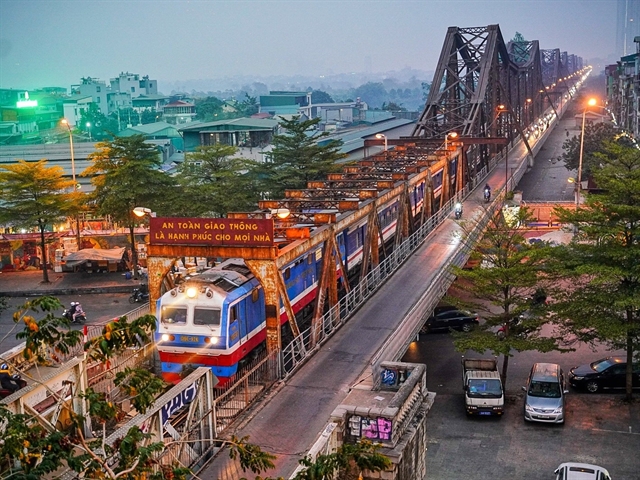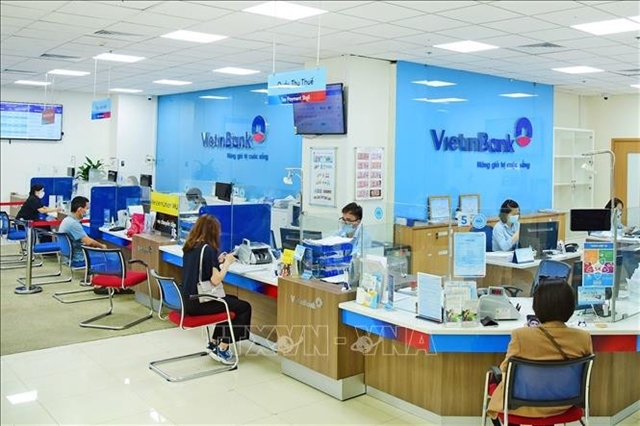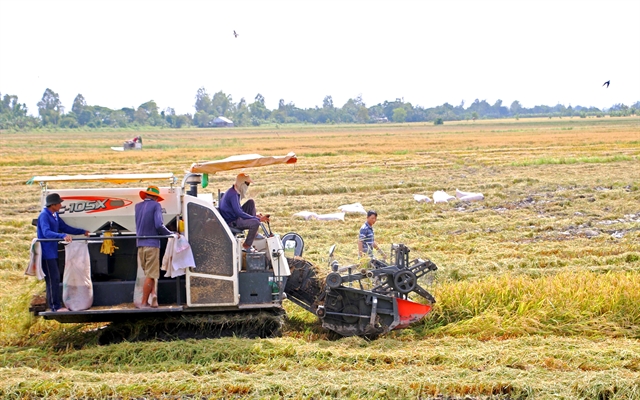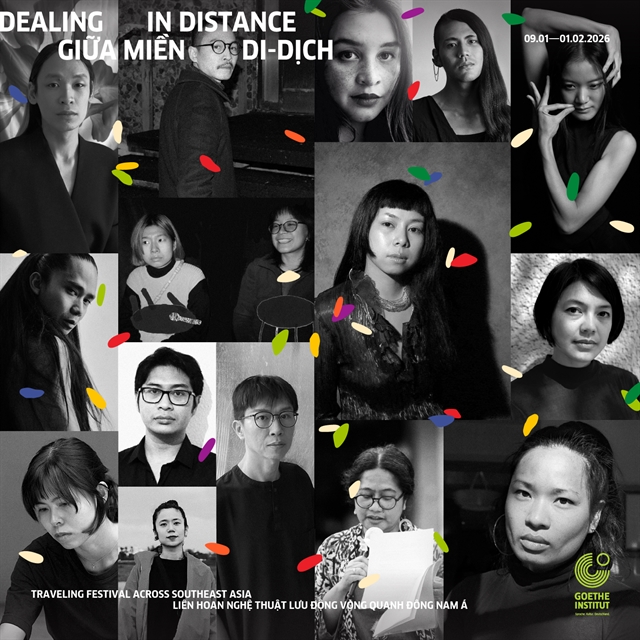 Society
Society

 |
| Farmers harvest the autumn-winter rice in Vĩnh Khánh Commune in An Giang Province’s Thoại Sơn District. — VNA/VNS Photo Công Mạo |
AN GIANG — An Giang Province is developing rice production towards enhancing value, establishing linkages among stakeholders, increasing mechanisation, and growing high-quality varieties to meet export requirements.
The Cửu Long (Mekong) Delta province, the second-largest rice producer in the country after neighbouring Kiên Giang Province, benefits from a constant freshwater supply throughout the year from the Tiền and Hậu rivers, tributaries of the Mekong River.
Situated in the delta’s upstream area, the province is seldom affected by saltwater intrusion, enabling most areas to grow three crops annually.
With nearly 640,000 hectares and an annual paddy output of nearly four million tonnes, An Giang's rice export value exceeds US$250 million per year.
With the support of relevant departments and agencies, more farmers are forming partnerships with companies to cultivate rice under contractual agreements, ensuring stable outlet and selling prices.
The provincial Department of Agriculture and Rural Development, the Province's Farmers Association, and the Province Co-operative Alliance have signed an agreement with the Lộc Trời Group for rice production from 2024 to 2030.
According to the agreement, the large-scale rice fields planted through collaboration between farmers and the group will cover 139,000 hectares next year and 257,000ha in 2025.
Nguyễn Sĩ Lâm, the department director, said to effectively implement the agreement, the department would facilitate and support the Lộc Trời Group, including its member companies, in rice production in designated areas.
It will assist the group in establishing cooperatives in rice-growing areas, expanding agricultural extension activities, and implementing high-tech agriculture in cooperatives involving the group.
Collaborating with district-level people’s committees, it will guide relevant agencies in facilitating the signing of farm contracts between cooperatives, farmers and Lộc Trời.
It will issue production codes for rice-growing areas linked with the group.
Nguyễn Văn Nhiên, chairman of the Province Farmers Association, reported that the association has encouraged over 40 cooperatives and several cooperative groups to partner with more than 30 companies, ensuring reliable outlets for farmers.
An Giang aims for rice farming areas under stakeholder linkages to constitute 25-28 per cent of its total rice-growing area by 2025.
The province has registered with the Ministry of Agriculture and Rural Development to participate in a project for the sustainable development of one million hectares of high-quality and low-emission rice cultivation associated with green growth in the Mekong Delta.
An Giang's extensive rice farming area positions it favourably to engage in the project, said Lâm, the department director.
Under the project, the province targets a high-quality rice-growing area of 103,000 hectares by 2025 and 152,000 hectares by 2030.
For the 2023-24 winter-spring crop, localities in the province have registered to grow 20,609 hectares of rice under the project, according to the department.
Improving Quality
An Giang is encouraging farmers to adopt environmentally friendly rice-growing models that enhance quality and profits.
The Việt Nam Farmers Association has selected An Giang to participate in a project applying environmentally friendly rice-growing methods. These methods involve reducing chemical usage, employing wet and dry irrigation techniques, and planting flowers around rice fields to attract insects that control brown plant hoppers, the main pest for rice.
The province has taught farmers environment-friendly farming techniques and developed some excellent models.
Trần Thanh Vân in Chợ Mới District’s An Thạnh Trung Commune said: “After learning environmentally friendly farming techniques, I apply them to a 1,000sq.m rice field.”
By using these techniques, he can reduce the quantity of chemical fertilisers by 5-8 kilogrammes compared to traditional farming methods. Besides, the number of irrigation cycles in a rice crop has decreased by two, he said.
He utilises paddy straw and stubble to grow mushrooms and then uses the used paddy straw and stubble to make organic fertilisers, generating an additional income.
Farmers are currently in the autumn-winter rice peak harvest, and are enjoying a bumper crop and high prices.
Nguyễn Thanh Vũ in Thoại Sơn District’s Vĩnh Chánh Commune has harvested 3.9 hectares of IR 50404 rice and achieved a yield of 6.1 tonnes per hectare.
He sold the rice at VNĐ8,900 per kilogramme, earning a profit of around VNĐ27 million (US$1,100) per hectare, he said.
Lâm said the province has 157,000 hectares of rice and harvested more than 50,000 hectares with an average yield of 5.8 tonnes.
Rice from lands without linkages between farmers and companies and guaranteed outlets have been “pre-purchased by traders, providing farmers with a sense of security,” he added. — VNS




